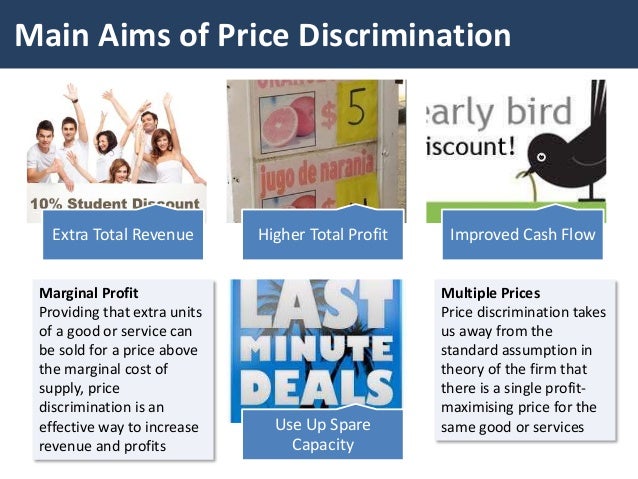Price Discrimination
What is price discrimination?
Price discrimination is a method of charging different charges from different groups of consumers for an identical good or service.Price discrimination is a strategy of pricing adopted by a monopolist to earn abnormal profit
We can see price discrimination in our life from these following examples given below.
1. A doctor charges higher fees from a rich patient compare to poor patient even though both are suffering from viral fever.
2. India has younger population so the Price of phones in India is higher than other countries.
3. Cinemas are Charging more price of tickets on weekends compared to other days just like that they charge more price on starting of day compared to the end.
3. Cinemas are Charging more price of tickets on weekends compared to other days just like that they charge more price on starting of day compared to the end.
4. Consumers buying railway tickets for reserve seats several months in advance pay less than consumers purchasing at the last minute just like that you can take the example of airplane ticket.
Price discrimination can not persist under perfect competition because the seller has no influence over the market determined price. price discrimination requires an element of monopoly so that the seller can influence the price of his product
1.to earn maximum profit
2.to dispose of surplus stock
3.to enjoy economies of scale
4.to capture foreign markets
5.to secure equity through pricing

Conditions for price discrimination
Price discrimination is possible only under following conditions
1.The seller should have some control over the supply of his product i.e. the should have price-setting power. Monopoly power in some form is necessary to discriminate price
2.The seller should be able to divide his market into sub-markets.
3. The price elasticity of the product should be different in different sub-markets. The monopolist fixes a high price for his product for those buyers whose price elasticity of demand for the product is less than one and lower price from them whose price elasticity is greater than one.
This implies that when price elasticity is less than one monopolist charges higher price and consumer, significantly do not reduce their purchases and on the other side whose price elasticity is greater than one, they reduce their purchases significantly on changing of price
4. The buyers of low priced market should not be able to resell the product to the buyers of high price market i.e. there must not be market arbitrage.
Thus we can say that a monopolist charges higher price from a market which has inelastic demand,less price from market which has elastic demand
A Numerical example will help you understand price- discrimination clearly
suppose the single monopoly price is ₨ 50 and the elasticity of demand in the markets A and B are respectively 2 and 5
AR of good A = AR of good B = ₨50
Elasticity of good A = 2
Elasticity of good B = 5
MR of good A = AR [(e-1)/e]
= 50[(2-1)/2]
= 25
MR of good B = 50[(5-1)/5]
= 40
It is thus we can say that the marginal revenue in the two markets are different of demand at the single price are different. We that the marginal revenue in market in which elasticity is high is greater than the revenue in the market where elasticity is low. Therefore, it is profitable for the monopolist to transfer some amount of the product from market A where elasticity is less and therefore marginal revenue is low, to market B where elasticity is high and marginal revenue is large.
Thus when the monopolist transfers one unit from market A to B ,the loss in revenue ₨ 15 will be more than compensated by gain in revenue ₨ 24. On the whole ,the gain in revenue will be ₨ 9. It is to be noted that when some units transfers from A to B, the price in market A will rise and it will fall in B. This means that the monopolist is now transferred from A to B, the price in market A will rise and it will fall in B.
This means that the monopolist is now discriminating between markets A and B. Once this limit is reached and once a point is reached in two markets become equal as a result of transfer of output,it will no longer be profitable to shift more output from market A to market B. When this point of equality is reached the monopolist will be changing different prices in two markets -a higher price in market A with lower elasticity of demand and a lower price in market B with higher elasticity of demand.

Price elasticity of market A is lower than price elasticity of market B so Monopolist charging high price in market A compared to the market B, marginal cost is same in both graph. we got equilibrium price p1 and p2 in market A and market B(When MC=MRa, MC=MRb).With the help of these two markets we got equilibrium price and quantity in aggregate demand curve.
by- Anmol Vishnoi

No comments:
Post a Comment
If you have any doubt let me know